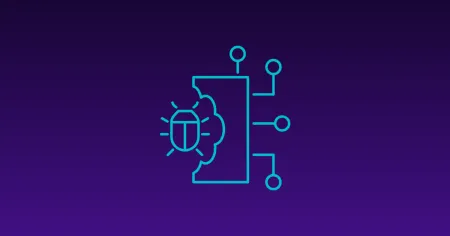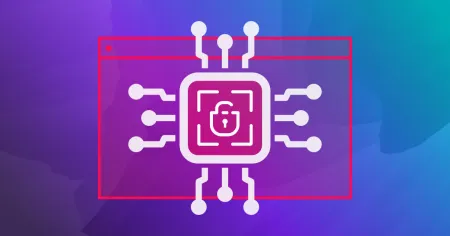Blog
Aug 20, 2024
Strengthening Your Cyber Defenses: The Critical Role of Defensive Training
Learn all about defensive cybersecurity and how OffSec’s programs empower professionals to build strong defenses.
11 min read

While much attention is given to offensive security—ethical hacking, penetration testing, and red teaming—the role of defensive cybersecurity training is equally critical. Defensive strategies are the backbone of a robust security posture, ensuring that organizations can not only identify but also withstand and mitigate attacks.
Whether you’re a seasoned cybersecurity professional or someone looking to bolster your organization’s security posture, understanding the value and necessity of defensive cybersecurity training is key to navigating the challenges of today’s threat landscape. Let’s explore how investing in this often-overlooked aspect of cybersecurity can make the difference between a successful defense and a costly breach.
Defensive cybersecurity refers to the practices, strategies, and technologies used to protect an organization’s digital infrastructure from cyber threats. It is the proactive side of cybersecurity, focusing on preventing, detecting, and responding to cyber-attacks to minimize potential damage. Unlike offensive cybersecurity, which involves activities like penetration testing or ethical hacking to identify vulnerabilities by simulating attacks, defensive cybersecurity is about building and maintaining robust defenses to ensure that those vulnerabilities are never exploited.
Defensive cybersecurity is crucial because it directly impacts an organization’s ability to protect sensitive data, maintain business continuity, and preserve its reputation. In a world where cyber attacks are becoming more frequent and sophisticated, a strong defensive posture is essential for mitigating risks and ensuring that an organization can operate securely.
Without effective defensive measures, organizations are vulnerable to a wide range of cyber threats, including malware, ransomware, social engineering, and more. These attacks can lead to significant financial losses, legal liabilities, and damage to an organization’s reputation. Therefore, investing in defensive cybersecurity is not just a technical requirement but a business imperative.
- Prevention: The first line of defense involves measures designed to prevent cyber threats from successfully infiltrating systems. This includes implementing firewalls, antivirus software, intrusion detection/prevention systems (IDS/IPS), and secure access controls. Prevention also involves patch management, ensuring that all software is up-to-date with the latest security patches to close potential vulnerabilities.
- Detection: Despite the best prevention measures, some threats may still penetrate defenses. Defensive cybersecurity includes mechanisms for detecting these threats as quickly as possible. Tools such as Security Information and Event Management (SIEM) systems, network monitoring, and endpoint detection and response (EDR) solutions are essential for identifying suspicious activity that could indicate a breach.
- Response: Once a threat is detected, the next step is to respond effectively to contain and mitigate the impact. This involves incident response protocols, which are predefined procedures that guide cybersecurity teams on how to act swiftly to isolate affected systems, eradicate the threat, and begin recovery efforts.
- Recovery: After responding to a security incident, the focus shifts to recovery, ensuring that systems are restored to normal operation with minimal disruption. This may involve data recovery from backups, system repairs, and an analysis of the breach to prevent similar incidents in the future.
- Threat intelligence: Defensive cybersecurity also involves gathering and analyzing threat intelligence to understand the tactics, techniques, and procedures (TTPs) used by attackers. This intelligence helps in fine-tuning defenses and staying ahead of potential threats.
Defensive cybersecurity is a broad field that encompasses various specialized areas, each focused on protecting and securing an organization’s digital infrastructure from cyber threats. Here’s an overview of key areas within defensive cybersecurity, including Security Operations Centers (SOC), threat hunting, incident response, and digital forensics:
A Security Operations Center (SOC) is a centralized unit within an organization that deals with security issues on an organizational and technical level. The SOC team is responsible for continuously monitoring and analyzing the organization’s security posture to detect, respond to, and prevent cybersecurity incidents.
Functions:
- 24/7 monitoring: SOCs provide around-the-clock monitoring of an organization’s networks, systems, and data for any signs of suspicious activity.
- Threat detection: The SOC uses tools like SIEM (Security Information and Event Management) to aggregate and analyze data from various sources, identifying potential threats in real-time.
- Incident management: When an incident is detected, the SOC coordinates the response, working to contain and mitigate the threat.
- Reporting and compliance: SOCs often handle compliance reporting and ensure that the organization adheres to regulatory requirements related to cybersecurity.
The SOC is the nerve center of an organization’s defensive cybersecurity efforts, ensuring that threats are detected early and handled efficiently, thus minimizing potential damage.
Threat hunting is a proactive approach to identifying threats that have evaded traditional security defenses. Unlike traditional security measures that rely on automated alerts, threat hunting involves security experts actively searching for signs of potential threats within an organization’s environment.
Functions:
- Proactive search: Threat hunters use intelligence, hypotheses, and advanced analytics to search for hidden threats that might not trigger alerts.
- Behavioral analysis: Analyzing patterns of behavior in network traffic and user activities to identify anomalies that could indicate malicious activity.
- Hypothesis-driven investigations: Threat hunters often develop and test hypotheses about how attackers might exploit vulnerabilities or bypass existing defenses.
- Continuous improvement: Findings from threat hunting activities are used to improve detection rules and security controls, making the organization’s defenses more robust over time.
Threat hunting adds an additional layer of security by seeking out and neutralizing threats before they can cause harm, even when those threats are stealthy or previously unknown.
Incident response (IR) refers to the processes and procedures used to detect, respond to, and recover from cybersecurity incidents, such as breaches, malware infections, or denial-of-service attacks. The goal of incident response is to handle the situation in a way that limits damage and reduces recovery time and costs.
Functions:
- Preparation: Developing and maintaining an incident response plan, which includes defining roles, responsibilities, and procedures for responding to incidents.
- Detection and analysis: Quickly identifying and assessing the nature and scope of the incident to determine the appropriate response.
- Containment: Implementing measures to limit the spread of the incident, such as isolating affected systems or networks.
- Eradication and recovery: Removing the threat from the environment and restoring systems to normal operation. This may involve patching vulnerabilities, restoring data from backups, and ensuring that the root cause of the incident has been addressed.
- Post-incident analysis: Conducting a thorough review of the incident to understand what happened, how it happened, and how to prevent similar incidents in the future.
Effective incident response minimizes the impact of cybersecurity incidents, helping organizations quickly return to normal operations while protecting critical assets.
Digital forensics involves the collection, analysis, and preservation of digital evidence from computers, networks, mobile devices, and other digital storage media. It is a crucial aspect of investigating cybersecurity incidents, particularly when the incident may involve legal proceedings or require a detailed understanding of what occurred.
Functions:
- Evidence collection: Gathering digital evidence in a way that preserves its integrity, ensuring it can be used in legal investigations if necessary.
- Analysis: Analyzing digital evidence to reconstruct the events leading up to and during a cybersecurity incident. This might include recovering deleted files, tracing the origin of an attack, or identifying compromised accounts.
- Reporting: Documenting findings in detailed reports that can be used by legal teams, law enforcement, or internal security teams to understand the incident.
- Expert testimony: In cases where a cybersecurity incident leads to legal action, digital forensics experts may be called upon to provide testimony about their findings.
Digital forensics is essential for understanding the full scope of a cybersecurity incident, especially when the incident involves criminal activity. It helps organizations learn from incidents, improve their security posture, and, if necessary, pursue legal action against attackers.
Cyber threats have become increasingly sophisticated, targeting every sector from finance and healthcare to education and government. These threats are not just external; insider threats, whether intentional or accidental, pose significant risks as well. With the rise of ransomware, phishing, and advanced persistent threats (APTs), organizations must be equipped to defend against a wide array of cyber-attacks.
Defensive cybersecurity training focuses on preparing security professionals to recognize, respond to, and recover from these attacks. It is the first line of defense, equipping teams with the knowledge and skills needed to protect critical assets and maintain the integrity of an organization’s systems and data.
Defensive cybersecurity training is a structured and continuous educational process designed to equip cybersecurity professionals with the knowledge, skills, and tools necessary to protect an organization’s digital infrastructure from cyber threats. This type of training focuses on the defensive aspects of cybersecurity, emphasizing how to prevent, detect, respond to, and recover from cyber-attacks.
- Incident response training: Preparing teams to effectively respond to and manage security incidents. This includes identifying the breach, containing the threat, eradicating it, and recovering from the incident.
- Network defense: Implementing and managing firewalls, intrusion detection/prevention systems (IDS/IPS), and security information and event management (SIEM) tools.
- Endpoint protection: Ensuring that all endpoints, including laptops, mobile devices, and servers, are secure and up-to-date with the latest security measures.
- Threat intelligence: Training teams to gather, analyze, and use threat intelligence to predict, detect, and mitigate potential threats before they materialize into full-blown attacks.
Investing in defensive cybersecurity training brings a multitude of benefits.
A well-trained defensive team is essential for maintaining a proactive security posture. These professionals are equipped to identify vulnerabilities and potential threats before they can be exploited, shifting the organization’s approach from reactive to proactive defense. In the event of a breach, their training enables them to minimize damage, thereby reducing the recovery time and the costs associated with downtime and data loss.
Defensive cybersecurity training also plays a crucial role in ensuring cybersecurity compliance and managing risk. Many industries are governed by strict regulations that demand a strong security posture. Trained professionals ensure that the organization meets these compliance requirements, helping to avoid hefty fines and legal complications.
Furthermore, effective incident response is significantly enhanced through proper training. Well-prepared teams can handle security incidents more efficiently, reducing the overall impact of attacks and accelerating the recovery process.
OffSec offers a range of specialized defensive cybersecurity training programs designed to equip professionals with the skills necessary to effectively protect and defend against today’s sophisticated cyber threats. These programs cater to various aspects of defensive cybersecurity, ensuring that professionals are thoroughly prepared to manage and mitigate risks across all areas of security operations.
The foundation of OffSec’s defensive training begins with the Security Operations Essentials Learning Path. This training program is designed to introduce cybersecurity professionals to the core concepts and practices essential for securing and managing security operations. It covers the basics of defensive security, including the tools and techniques required to monitor and protect an organization’s digital infrastructure. This Learning Path is ideal for those who are new to defensive cybersecurity or looking to build a solid foundation in security operations.
Building on the essentials, the SOC-200 course dives deeper into the specifics of security operations and defensive analysis. This course is designed for professionals who work in or aspire to work in a Security Operations Center (SOC). It focuses on real-world defensive techniques, including the use of Security Information and Event Management (SIEM) tools, log analysis, and incident detection strategies. SOC-200 prepares participants to effectively monitor, detect, and respond to threats within a SOC environment, ensuring they can protect their organization against a wide range of cyber threats.
OffSec also offers specialized training in MITRE D3FEND, a framework that provides defensive countermeasures for the techniques described in the MITRE ATT&CK framework. This Learning Path is particularly valuable for cybersecurity professionals who want to deepen their understanding of how to effectively counter known adversarial techniques. By learning how to apply MITRE D3FEND principles, professionals can enhance their organization’s ability to anticipate and thwart attacker moves, reinforcing their defensive posture with actionable, intelligence-driven strategies.
The Threat Hunting Essentials Learning Path is designed for cybersecurity professionals who want to take a proactive approach to identifying and neutralizing threats. This training emphasizes the importance of threat hunting as a critical aspect of defensive cybersecurity. Learners learn advanced techniques for detecting hidden threats that have bypassed traditional defenses, enabling them to anticipate and respond to attacks before they can cause significant harm. The Learning Path equips professionals with the skills to actively seek out threats and fortify their organization’s defenses.
Finally, OffSec’s Incident Responder Essentials Learning Path focuses on preparing professionals for the critical task of incident response. This training is tailored for those who are responsible for managing and mitigating security incidents within their organization. Learners learn how to develop and implement effective incident response plans, conduct forensic investigations, and recover from breaches with minimal disruption. The Learning Path ensures that incident responders are equipped with the knowledge and skills to handle any cybersecurity incident efficiently and effectively, minimizing damage and ensuring swift recovery.
While offensive security techniques often capture the spotlight, it is the strength of an organization’s defensive capabilities that ultimately determines its resilience against cyber threats. Defensive cybersecurity training empowers professionals with the skills and knowledge needed to protect, detect, and respond to a wide array of potential attacks, ensuring that organizations can maintain their operations and safeguard their critical assets.
OffSec’s comprehensive training programs are specifically designed to address the multifaceted challenges of defensive cybersecurity. By covering essential areas such as security operations, threat hunting, incident response, and advanced frameworks like MITRE D3FEND, these training programs ensure that cybersecurity professionals are well-equipped to face the evolving threat landscape. Investing in such training not only enhances individual capabilities but also fortifies the overall security posture of the organization, reducing risks and enabling a more proactive approach to cybersecurity.

Sara Jelen
Sara Jelen is the Content Marketing Manager at OffSec. Through her extensive work as a writer and content marketer, Sara is specialized in the cybersecurity domain. With a background in anthropology and arts, Sara incorporates a human-centric perspective in exploring cybersecurity topics and the movers and shakers behind it.
Stay in the know: Become an OffSec Insider
Get the latest updates about resources, events & promotions from OffSec!
Latest from OffSec

Enterprise Security
How OSCP Holders Can Lead Their Teams to Greater Cybersecurity Resilience
Champion OSCP training in your organization to build a unified, resilient security team.
Apr 11, 2025
5 min read

Research & Tutorials
CVE-2024-57727: Path Traversal Vulnerability in SimpleHelp Web Application
CVE-2024-57727 lets attackers read sensitive files via path traversal in SimpleHelp. Learn more about how attackers exploit this flaw.
Apr 10, 2025
3 min read

Penetration Testing
AI Penetration Testing: How to Secure LLM Systems
Explore how AI penetration testing enhances LLM security, addressing unique vulnerabilities and improving cyber defenses.
Apr 3, 2025
8 min read